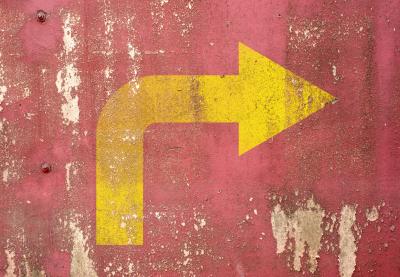Last year one of my seventh-graders, a usually unflappable student I’ll call Kamau, melted down in response to a seemingly benign comment: A classmate had complimented his clothing. Talking to him, I realized that his explosion arose from deep-rooted homophobia. Kamau felt strongly that “God said being gay is wrong.” We talked through it for a long while, discussing what it means to respect others and how discrimination hurts individuals and society as a whole, but his beliefs ran deep. While he agreed to be outwardly respectful to his classmates, he insisted, voice shaking with emotion, that he would never be OK with “people like that.” My attempts at making this a teachable moment were not working.
One day, when I picked the students up from science class, there was a lot of angry yelling. As they walked out of the classroom, many students told me that we needed to have a class discussion. Back in my room, we circled up. They told me that an outburst had occurred after a student named Jada* had quietly told some friends she was attracted to girls. A new student, who’d only been in the class a couple weeks, ridiculed her. Others immediately jumped to Jada’s defense, and the new student responded by digging in and making more disrespectful comments.
The class conversation went well, with the majority of students expressing support for Jada and LGBTQ people in general. Eventually, the student who had made fun of Jada began to listen and ask questions. Jada grinned throughout the whole conversation. Afterward, when I asked her how she felt, she said, “Amazing,” never losing the grin. Kamau, however, didn’t join the circle. He hovered on the outside, shooting paper balls into the trash can. At one point, he sat down, about to say something, but then immediately stood up and stepped back.
Kamau’s typical restraint made it hard to determine his underlying feelings, but over the next few months more students came out, and we had many class discussions about discrimination and acceptance. I was piloting a service learning program that year, and each student was asked to choose a pressing social issue they felt passionately about. Kamau’s first choice didn’t have enough people, so he chose to join the group focusing on sexuality-based discrimination, a group with some openly LGBTQ students. Another student in the group privately expressed surprise to me that Kamau had chosen their group, saying, “Maybe he’s grown.”
The groups researched their issues, learned what was already being done to address them and decided what actions they would take. Kamau got along well with his group but asked to switch after a few weeks, saying he just didn’t feel comfortable. He spent the next month working on a different project. Meanwhile, his initial group kept at it, planning to hold a bake sale at the Pride festival to raise money for a local organization supporting LGBTQ youth.
On the Friday before the bake sale, we all met at the house where we’d be baking and—surprise—Kamau was there! He had come to help us bake, even though he was no longer in the group. The kitchen rapidly became piled with ingredients and dishes as six students and I tried to make five recipes simultaneously.
Kamau wanted to participate in every part of the process and eagerly took on any job. For every task, he would jokingly say, “It takes a strong man to do the dishes.” Or to sweep the floor, scoop the cookies or frost the cake. As we were cleaning up, Kamau said he wanted to help out during Pride itself. He couldn’t find a ride, so he walked there—a mile and a half from his house.
As we set up the booth, the students were buzzing with excitement and nervousness. The students soon settled into a confident rhythm. Kamau stood out front with a plate of samples—“It takes a strong man to hold the samples”—while others expertly handled the money, passed out baked goods and engaged with customers, explaining why we were there. A local business owner and veteran activist came to the booth and praised the students.
People paraded by our booth, many dressed in vibrant and elaborate outfits. I worried a bit about how the students, particularly Kamau, would react when actually seeing people who didn’t conform to binary gender norms. There was not one question about people’s gender or sexuality, though. Not one negative or confused comment. Just acceptance.
We sold out in three hours. Some students wanted to stay and explore the festival. On their own, they decided to approach each booth and ask questions. We came to a booth with people from the St. Francis Mission apologizing to anyone who had been made to feel unwelcome in church because of their gender or sexuality. When one student asked why they were apologizing, Kamau said, “I know why,” and then just stood there like he wanted to say more. Instead, he remained silent.
For the rest of the year, Kamau and this group shared a genuine bond. My training and experience told me that Kamau’s start-of-the-year explosion should have been the teachable moment, but my usual tactics failed to expand his thinking even slightly. What Kamau needed was time with his classmates: time to get to know them, learn from them and love them. He also needed time to understand that acceptance meant that he, too, could feel comfortable and safe. When we processed the year in our final circle, the group’s favorite memories, including Kamau’s, were of each other and the difference they had made in the world.
*This name has been changed.
Patriarco was a classroom teacher for 10 years.


0 COMMENTS